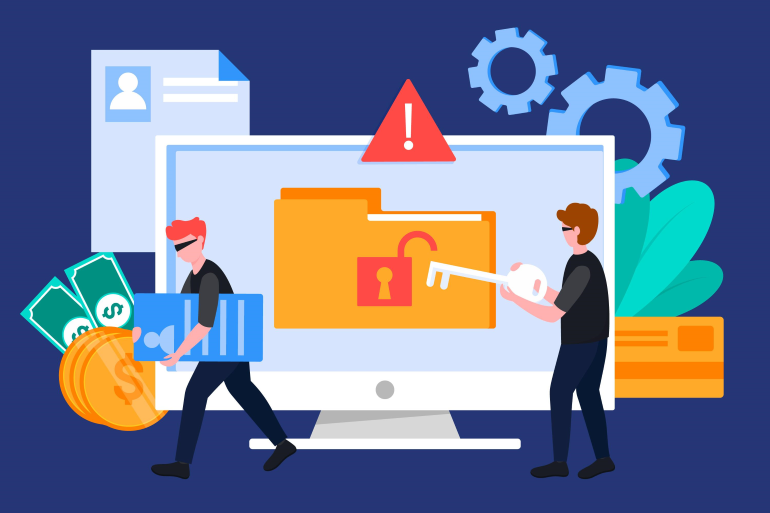
Today’s world is a global village, with the internet connecting people from all corners of the globe. In this digital age, the Internet serves as the backbone of countless businesses, organizations, and personal activities. This means that ensuring web security is paramount for all and sundry. However, the digital landscape is fraught with numerous threats, from malicious hackers seeking to exploit vulnerabilities to data breaches that can have devastating consequences.
That’s where OWASP (Open Web Application Security Project) comes into play, offering a variety of resources and guidelines to bolster web security. In this blog, we’ll delve into the critical web security issues businesses face and explore how adhering to OWASP recommendations can fortify your defenses.
Let’s start by understanding the security issues in web app development.
Understanding Web Security Issues
Injection Attacks
Injection attacks, such as SQL injection and Cross-Site Scripting (XSS), are one of the most prevalent security threats in the digital world. These attacks occur when malicious code is injected into input fields, exploiting vulnerabilities in the application’s code and potentially gaining unauthorized access to sensitive data.
Poor Authentication and Session Management
Weak authentication mechanisms and improper session management in web applications like podiatry medical billing software can lead to unauthorized access. Without robust authentication protocols and secure session handling, attackers can hijack user accounts, impersonate legitimate users, and wreak havoc on your system.
Cross-Site Request Forgery (CSRF)
CSRF attacks involve tricking authenticated users into executing unintended actions on a web application. By exploiting the latter’s trust in a site, attackers can transfer funds or change account settings without the user’s consent.
Security Misconfigurations
Misconfigured servers, frameworks, or applications provide low-hanging fruit for attackers. Failure to update software, default configurations, and unnecessary services can expose vulnerabilities that are ripe for exploitation.
Insecure Direct Object References (IDOR)
Insecure Direct Object References occur when applications expose internal implementation objects to users. Attackers can manipulate these references to access unauthorized data or perform actions beyond their privileges.
OWASP: Fortifying Against Cyber Threats
OWASP stands for the Open Web Application Security Project. It’s an open community dedicated to improving software security. OWASP provides resources, tools, and guidelines to help organizations develop, deploy, and maintain secure web applications and APIs.
Their work includes identifying and raising awareness about common security risks and vulnerabilities, such as injection flaws, broken authentication, cross-site scripting (XSS), and more. The OWASP Top 10 is a well-known list of the most critical web application security risks, updated periodically to reflect emerging threats. OWASP best practices and recommendations help developers and organizations enhance the security posture of their web applications and protect against potential cyber threats.
Here’s how you can leverage OWASP to ensure the web security best practices for our digital assets:
The OWASP Top 10
The OWASP Top 10 is a widely recognized awareness document that highlights the most critical web application security risks. It serves as a guide for developers, architects, testers, and security professionals, outlining common vulnerabilities and offering mitigation strategies.
OWASP Cheat Sheets
OWASP provides cheat sheets covering various security topics, including authentication, cryptography, and secure coding practices. These cheat sheets offer practical guidance and best practices for developers to follow during application development.
OWASP Testing Guide
The OWASP Testing Guide is a comprehensive manual for testing web applications for security vulnerabilities. It provides testing techniques, methodologies, and tools to assess web applications’ security posture effectively.
OWASP Web Security Testing Tools
OWASP maintains a repository of open-source security testing tools designed to identify and mitigate web application vulnerabilities. From dynamic application security testing (DAST) to static application security testing (SAST), these tools offer a holistic approach to web application security testing.
Implementing OWASP Best Practices
Embrace Secure Coding Practices
Follow OWASP’s secure coding practices to mitigate common vulnerabilities such as injection attacks, XSS, and CSRF. Sanitize user inputs, use parameterized queries, and implement secure session management to thwart attacks effectively.
Regular Security Assessments
Conduct regular security assessments, including code reviews, penetration testing, and vulnerability scanning, to identify and remediate security weaknesses proactively.
Stay Updated
Stay abreast of the latest security threats, vulnerabilities, and mitigation techniques. OWASP’s community-driven approach ensures that its resources are continuously updated to address emerging threats and trends.
Foster a Security Culture
Promote a culture of security awareness within your organization. Educate developers, testers, and other stakeholders about web security best practices and the importance of adhering to OWASP guidelines.
Conclusion
Web security is a multifaceted challenge that requires proactive measures to mitigate risks effectively. By understanding common web security issues and leveraging OWASP’s resources and guidelines, organizations can bolster their defenses and safeguard their digital assets against evolving threats. Whether you’re a developer, security professional, or business owner, embracing web security best practices and staying vigilant are critical steps in defending against malicious actors in the ever-expanding digital frontier.
Xavor is a leading IT company with deep expertise in securing digital assets for clients across various industries. Our team leverages OWASP best practices to ensure you have peace of mind when it comes to your web security essentials.
Contact us at [email protected] to book a free consultation with our team and explore how you can bolster your web security.
